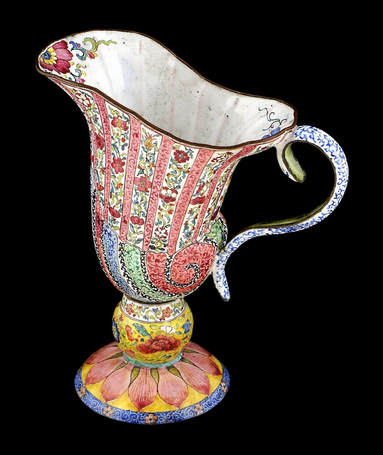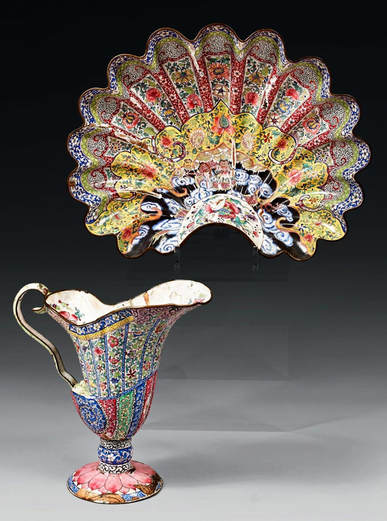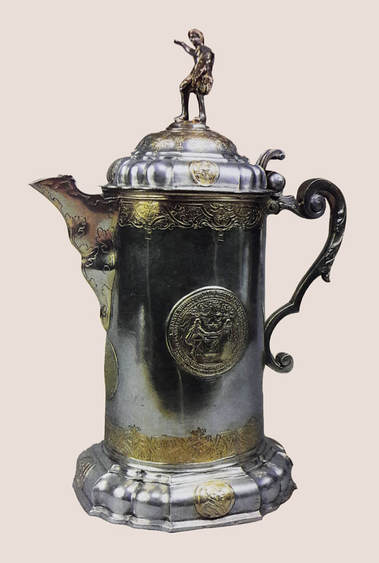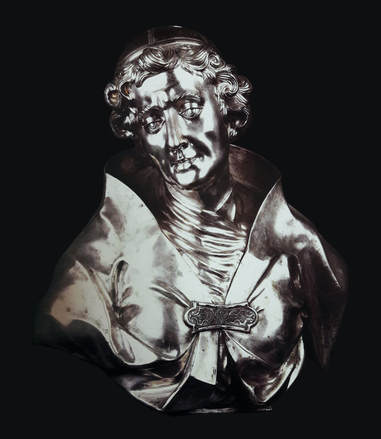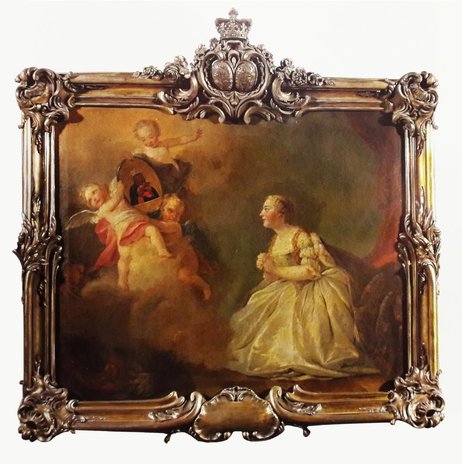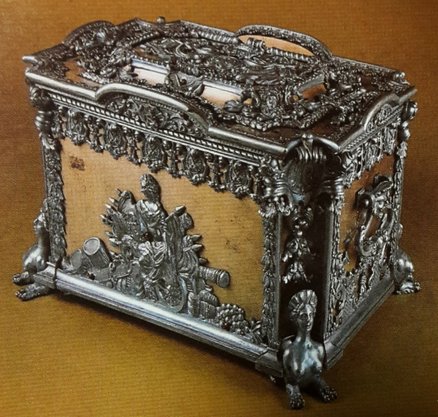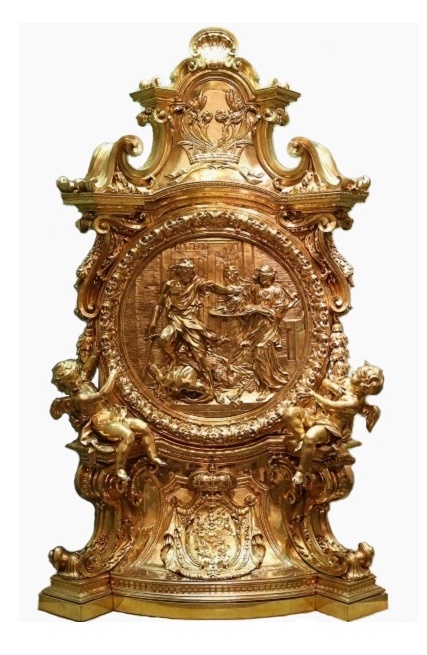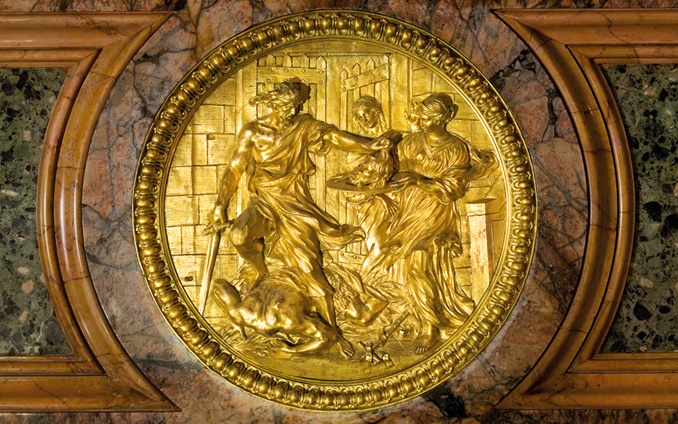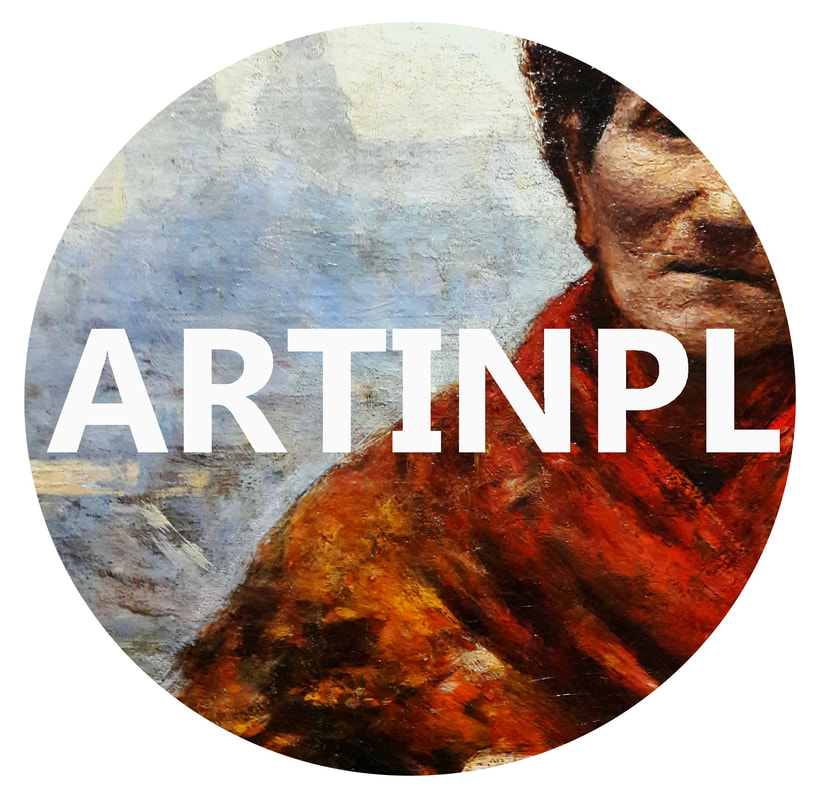|
According to Franciszek Maksymilian Sobieszczański's "Historical Information on Fine Arts in Poland", Volume II from 1849, the local museum in Brno in todays Czechia, had in its collection "a beautiful basin with an ewer, all enamelled in flower stripes, which was given by John III, among other items after relief of Vienna, to Emperor Leopold I, later in Empress Maria Theresa's study, given by her to the Princes of Solm, and few years ago offered to the Moravian Museum, is today kept in Brünn with athentic documents of its provenence" (page 326). The basin from original lavabo set was most probably lost, while enamelled picher in flower stripes is in the collection of Moravian Gallery in Brno (inventory number U 24136). Despite being dated to the second half of the 17th century on the museum website, it was most probably created during Yongzheng Period (1723-1735) for Persian or Ottoman market, hence any connection with John III Sobieski (1629-1696) of Poland can be excluded.
Enamelled pitcher by Anonymous from China, Yongzheng Period (1723-1735), Moravian Gallery in Brno.
Ewer and shell-shaped basin by Anonymous from China, Yongzheng Period (1723-1735), Étude de Maigret.
After two centries of domination as the main center of craftmanship of the Polish-Lithuanian Commonwath, the country's main port, Gdańsk, began to decline in the beginning of the 18th century. The transfer of royal court from Dresden, into Warsaw during the Seven Years' War in 1756, ended another half-century hegemony of the Saxon capital. Royal court in the capital of the Kingdom of Poland favored greatly developmnent of local workshops. Also many skilled gold- and silversmiths from other locations began to settle in Warsaw. Among the most notable were Antoni Ignacy Mietelski (d. 1737), originally from Warka, who settled in Warsaw in 1717. In 1725, 1733 and 1737 he was the senior of the city's guild of goldsmiths. Mietelski is the author of two silver jugs in similar proportions, one set with coins from around 1720 (Czartoryski Museum) and the other from 1726 made for the city council and adorned with the symbol of Warsaw - a siren (National Museum in Warsaw). The Warsaw's jug signed with monogram AM was commissioned by the mayor of Warsaw, Józef Benedykt Loupia.
The privilage of king Stanislaus Augustus Poniatowski from 1785 and subsequent orders sanctioned Jewish workshops not affiliated with a guild and impose strict rules on marking the objects (grade of silver, mark of the manufacturer and other hallmarks). Among the most notable goldsmiths of that time were Szymon Stanecki, treasurer of the guild from 1785, active till 1810, who signed his works with monogram SS. He is the author of a silver tureen with handles in the form of a ram's heads and a cover topped with an artichoke dated to about 1785 to 1788 (National Museum in Warsaw). Hil Jakubowicz, a Jewish goldsmith from Łask, who was appionted as one of the five state melters in 1788, is an author of an octagonal filgree basket from about 1785 to 1787. Teodor Pawłowicz, mentioned in the Royal priviledge from 1785 as a deputy senior of the guild and active till at least 1789, and Józef Skalski marking his works with monogram IS, active in the end of the 18th century. Foreigneres are represented by Karl Ludwig from Dresden, mentioned in the books of the Węgrów-Warsaw evangelical parish in 1785 and author of two silver tureens signed with monogram CL. Martin Holck, mentioned in the books of the mentioned parish in 1783 and active till 1794, Josef Götz called Gallus from Moravia, active in Warsaw from about 1773 till the end of the century and J.M. Schwartz who signed his works with monogram I.M.S. Unidentified by name silversmiths are Monogrammist IGB, possibly from Poznań, active from the 1770s till the end of the century, author of two tureens from the service of Michał Kemblan Chelkowski, chamberlain of king Stanislaus Augustus that can be dated to about 1785 to 1788.,Monogrammist ASW, Monogrammist GSS and Monogrammist AK, all active in Warsaw in the 1780s.
Silver jug with marriage medal of king Ladislaus IV Vasa and Cecilia Renata of Austria by Antoni Ignacy Mietelski, ca. 1720, Czartoryski Museum.
Silver bust of Saint Stanislaus from Gniezno Cathedral by Anonymous from Warsaw, 1726, Museum of the Gniezno Archdiocese.
Maria Josepha of Saxony visited the Jasna Góra Monastery with her sister Maria Anna Sophia on May 23rd, 1744. Daughters of Augustus III of Poland and Saxony offered to the Black Madonna of Częstochowa two gold hearts with their names as votive offering. In 1747 the princess married Louis, Dauphin of France (1729-1765) and some time later, in 1756, through intermediary of Duchess Jabłonowska, she sent to Jasna Góra a votive offering for healing her husband. The oil on canvas painting by anonymous French painter is set in a rich bronze frame, cast, chased and gilded, adorned with rocaille motifs and cartouches with coat of arms of Maria Josepha (Polish-Lituanian Commonweath and Kingdom of France). Inscription on frame informs about the intentions of the Dauphine of France. Both the painting and frame were creted by French workshop. Similar example of craftmanship is a late baroque strongbox with monogram of Augustus II of Poland by Pierre Fromery.
Votive painting of Maria Josepha of Saxony by Anonymous from France, ca. 1753, Treasury of the Jasna Góra Monastery.
Strongbox with monogram of Augustus II the Strong by Pierre Fromery, 1697-1733, Czartoryski Museum.
The late baroque altar made of gilded bronze was presented in 1772 to king Stanislaus Augustus Poniatowski by Papal nuncio in the Polish-Lithuanian Commonwealth, Giuseppe Garampi, in the name of Pope Clement XIV. It was created in about 1772 in Rome and adorned with king's coat of arms in lower part and a relief with the scene of the "Beheading of St. John the Baptist" in the center. The central tondo is probably of an earlier production from about 1688-1689 by Urbano Bertesi after Ciro Ferri's design or was based on a 17th-century form. Similar bronze relief, commissioned in 1688 by Gregorio Carafa, Grand Master of the Order of Saint John preserved affixed to the front of the altar in the Oratory of St. John's Co-Cathedral in La Valletta, Malta.
In 1777, the king's altar was installed in the new Chapel of the Warsaw's Royal Castle, so-called Saxon Chapel (today's concert hall) and remained there until 1832, when all precious furnishings were taken to Saint Petersburg, possibly at the request of Joanna Grudzińska, Princess of Lovich, morganatic wife of the Grand Duke Constantine Pavlovich of Russia who died in Tsarskoye Selo in 1831. In aftermath of the November Uprising against the Russian Empire all furnishings of the Royal Castle in Warsaw were confiscated by order of Tsar Nicholas I and some destroyed like ceiling painting and the inscription on the frieze in the Knights' Hall and marble decorations of the Marble Room reused during conversion of the Piarists Church in Warsaw into Russian Orthodox Church. The Poniatowski altar was installed in the church of St. John the Baptist in Tsarskoye Selo. In 1938 the church was closed by the Soviets and the altar was transferred to the Museum of the History of Religion in Saint Petersburg, then known as Leningrad.
Altar of king Stanislaus Augustus with Beheading of St. John the Baptist by Anonymous from Rome, ca. 1772, Museum of the History of Religion in Saint Petersburg.
Tondo with Beheading of St. John the Baptist by Urbano Bertesi after Ciro Ferri, 1688, St. John's Co-Cathedral in La Valletta.
See more pictures of Stanislaus Augustus Poniatowski's belongings on Pinterest - Artinpl and Artinplhub
|
Artinpl is individual, educational project to share knowledge about works of art nowadays and in the past in Poland.
© Marcin Latka Categories
All
Archives
April 2023
|
